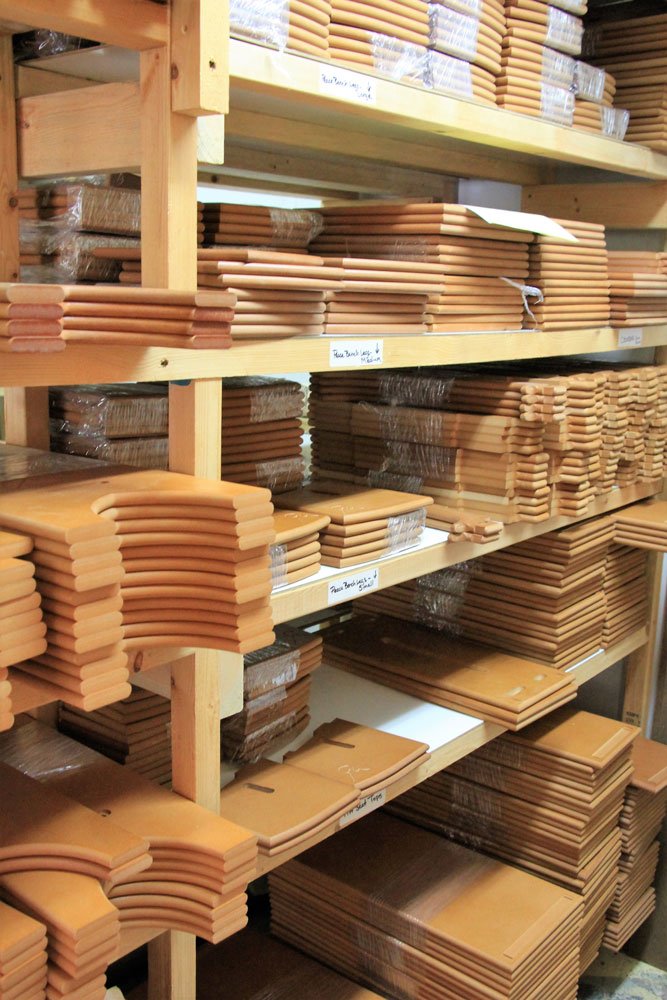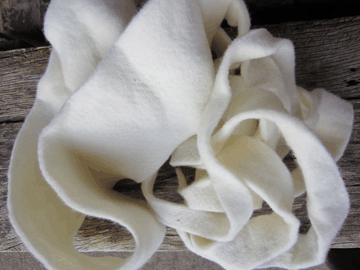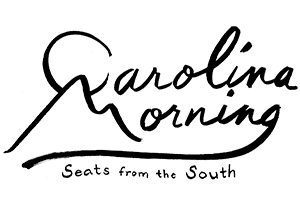Our Materials
Carolina Morning Designs is a pioneer in the Organic Furniture movement. We have searched out the most eco-friendly materials we can find and always strive to improve in this area. We invent things you can use to replace the everyday toxic objects we have in our homes and work places.
Our products are made from meticulously sourced organic, eco-friendly, and/or recycled materials including Organic Cotton, (with the option of conventional cotton for some products), Eco Wool®, kapok fiber, buckwheat hulls, and flax seed. We use 100% recycled wood non-toxic Medex® for our benches and EcoBackrests™, and sustainably harvested poplar wood for our EcoSquares™. All of our wood products are finished with a whey-based non-toxic wood finish. We buy domestically produced and local/regional as often as possible.
Sustainable fabric manufacturers are crucial to the environment. They reduce toxic properties by using eco-friendly materials and adopting ethical production techniques. Given that the textile industries have been known to contribute to pollution in a big way; it is important that we make sustainable choices. By offering such manufacturers’ products, Carolina Morning can meet the growing demand from consumers for green and more responsible choices. This movement towards sustainability not only saves the world but also offers a brighter tomorrow. Note: Fabric is usually considered “sustainable” if it’s made from natural or recycled materials. The intent is to minimize environmental harm, either through the production process, fiber properties, or environmental footprint.
Below is a discussion of each material and the facts around it.
BUCKWHEAT HULLS
Buckwheat is grown without herbicides and pesticides because this crop is not bothered by pests. Buckwheat is able to grow in poor soil without a problem. Buckwheat actually enhances the soil where it grows.
Our chemical-free buckwheat hulls are sustainably grown as a combination “green manure” or cover crop, and a crop producing Kashi – a roasted buckwheat cereal. There are two main milling processes for buckwheat that produce very different hulls. With the ROASTING process, dust is burned off instead of using water, and makes a clean, sturdy hull that smells like, well, roasted buckwheat. The other buckwheat milling process is to mill the hull WITHOUT ROASTING it first. This produces an inferior hull which requires washing to remove dust. The ROASTING method, in our experience, produces a better, longer lasting hull. However, there are no ROASTED hulls which are certified organic. We have chosen the ROASTED hulls because we feel the certification process is minor in this case, since this buckwheat is grown totally without pesticides, herbicides or other chemicals. Click here for research on the buckwheat growing process.


KAPOK
Kapok is soft, smooth, hygienic, non-toxic, hypoallergenic and environmentally friendly. It is breathable, allows air circulation and has healthful benefits. It can be reused for generations, without developing mold or decaying. It even floats!
Kapok is one of the few sustainable rainforest crops. It is grown without herbicides and pesticides because this crop is not bothered by pests. Kapok actually enhances the soil and ecosystem where it grows.
Kapok fiber comes from the seed pod of the majestic kapok tree. Kapok, an ancient treasure, has for centuries, represented a prized possession and historically used by gurus, saints and spiritual masters who marveled at its unique characteristics such as its ability to shape to the body with rebounding instantly to its original fluffy shape.
Kapok (Ceiba pentandra) is a tropical tree of the order Malvales and the family Malvaceae (previously separated in the family Bombacaceae), native to Mexico, Central America and the Caribbean, northern South America, and (as the variety C. pentandra var. guineensis) to tropical west Africa. The word is also used for the fibre obtained from its seed pods. The tree is also known as the Java cotton, Java kapok, or ceiba. It is a sacred symbol in Maya mythology.
The tree grows to 60-70 m (200-230 ft) tall and has a very substantial trunk up to 3 m (10 ft) in diameter with buttresses. The trunk and many of the larger branches are densely crowded with very large, robust simple thorns. The leaves are compound of 5 to 9 leaflets, each up to 20 cm (8 in) and palm like. Adult trees produce several hundred 15 cm (6 in) seed pods. The pods contain seeds surrounded by a fluffy, yellowish fiber that is a mix of lignin and cellulose.
We have completely eliminated COTTON BATTING from our cushions and replaced it with kapok. Since we live in the south we noticed cotton batting has a tendency to mold from simple humidity in the air. Cotton is also one of the most chemically laden crops. 25% of all pesticides used in the world are on the cotton crop alone. Kapok has been used for centuries as stuffing material for sleeping and sitting mats and mattresses. Since the advent of synthetic fibers, kapok has virtually been eliminated as a mattress stuffing material.
POPLAR WOOD
Eco Squares™ and railings are made from sustainably harvested poplar wood grown and milled in our own Appalachian Mountains.


MEDEX
Our Tilt Seats™, Peace Benches™, Sky Benches™, and Eco Backrest™ frames are all made from Medex. Medex is an eco-friendly, sustainable, moisture resistant, medium density fiberboard (MDF), utilizing a formaldehyde-free adhesive system and 100% post-industrial recycled wood fiber.
This recycled wood fiber is a by-product of other wood manufacturing processes, and includes the resultant waste such as sawdust, veneer backer boards, peeler cores.
Click Link to learn more about this product…
ECO WOOL
Eco Wool is used in our futons as the ‘barrier’ layer. That means it is surrounding the outer boundaries of the futon and is itself encased in an organic cotton fabic. Eco Wool Felt Barrier Cloth adds a nice resiliency or spring to the futon and at the same time protects the futon from becoming a fire hazard.
The name “Eco Wool” is the signature product of Woolgatherers Carding Mill.
Eco Wool® batting is made from a blend of wool from different sheep breed. Each wool grower must ensure that fleeces come from healthy sheep raised on sustainably managed lands. They pay collaborating wool growers a premium for the best fleeces from their flocks. Fleeces are then cleaned and carded on a full wool card line, which produces the finest known woolen batting available.
Our growers ensure:
PROPER GRAZING METHODS: Adequate field rotation to decrease soil erosion and to reduce the risk of sheep acquiring internal parasites.
PREDATOR FRIENDLY: Growers are encouraged to use trained sheep guardian dogs (not trapping or shooting) and the inclusion of other larger animals, such as llamas, to guard the flock.
HEALTHY VETERINARY PRACTICES: Only certain kinds of medications and supplements can be used to treat the sheep. Alternative caring methods are preferred to keep sheep healthy with fewer chemicals.
CHEMICAL CONTROL: Eco Wool opposes the use of herbicides and pesticides on fields that the sheep will be grazing in. We are able to determine if growers use these chemicals in our routine wool chemical testing.
SPECIFICATIONS FOR BREED, COLOR, STRENGTH AND MICRON-WIDTH: The Woolgatherer Carding Mill blend uses wool from six to eight different breeds, depending on availability. Eco Wool does not allow black wool and very little canary yellow wool in the ECO WOOL blend.
SKIRTING: Skirting is the process of removing less-desirable wool from the belly and back end of the sheep. This wool is separated on a skirting table and sold to other clients. In addition samples of wool are sent to two separate laboratories for chemical testing. A sample of the raw wool is sent to the University of Utah, and a sample of the batting is sent to Oeko-Tech Laboratory in Germany. The University of Mass-Lowell performed tests comparing Eco Wool batting to a competitorÕs for strength, resilience, flammability, and endurance. Their tests demonstrated that a mattress made with ECO WOOL batting would last twice as long as the competitor’s before flattening on top.
Common Wool Industry Practices That the Woolgatherer Carding Mill Opposes:
CARBONIZING: Destroying vegetable matter lodged in wool using harsh acid; leaving the wool dried and unnaturally crimped. This method is used with New Zealand wool, as it tends to contain more veggie matter (5%VM). DIPPING: Bathing sheep in chemicals to ward off pests and insects.
BLEACHING: Different chemical solutions can be applied to whiten wool during and after scouring.
CARELESS SHEARING: Shearers are often paid per sheep, encouraging the average shearer to hurry. This leads to small wounds on the sheep that can easily become infected.
OVER-GRAZING: Crowding too many sheep onto land destroys vegetation and leads to erosion. If a field becomes barren, the grower must bring in dry feed that can add additional veggie-matter to the fleece.
INFORMATIVE LINKS:

